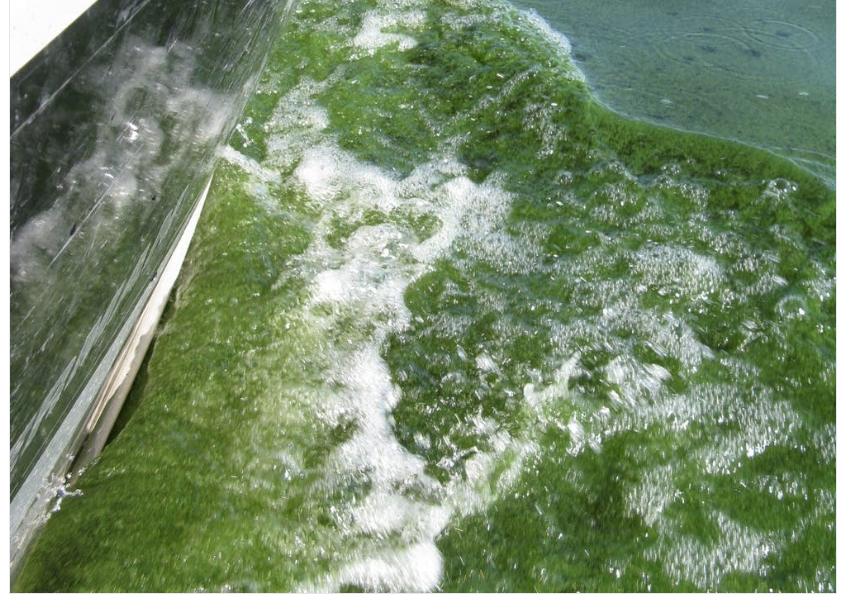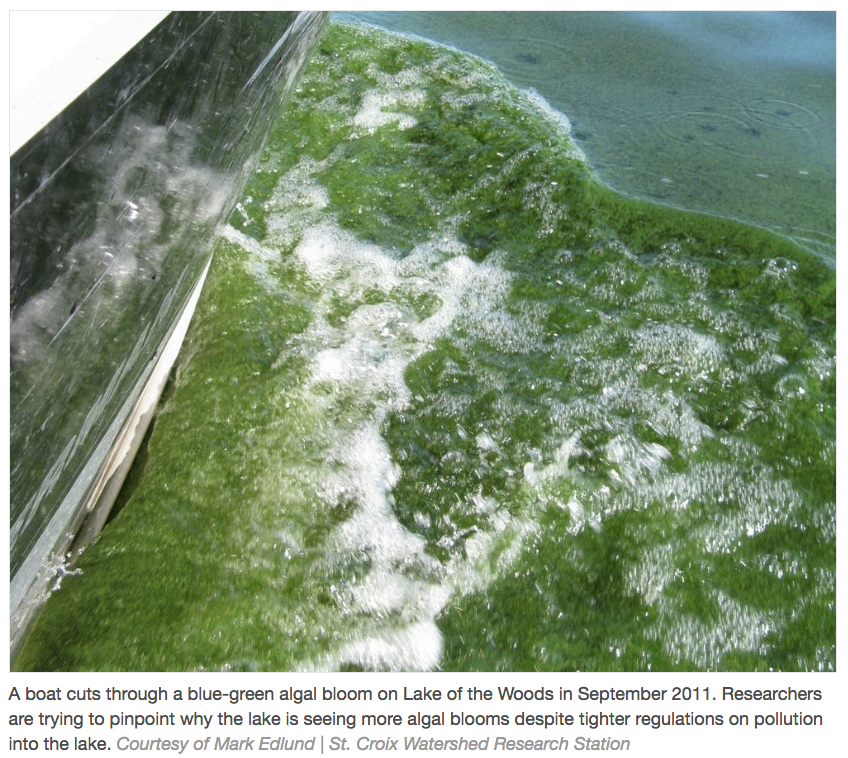Blue-green algae

The warming temperatures and more intense rains Minnesota has seen under climate change are altering lakes in ways that give blue-green algae a boost. The longer growing season that’s a byproduct of global warming offers blue-green algae warmer temperatures and more opportunities to thrive.
In Minnesota’s lakes, blue-green algae thrive best under warm, dry, calm conditions with access to plenty of their favorite foods: phosphorus and nitrogen. Those nutrients exist in lakes naturally, deposited when aquatic plants and fish die and decompose.
They are also deposited when rainstorms wash leaves, soil and fertilizer into streams and lakes. Over the years, farming, industry and urban development have caused those nutrient levels in Minnesota’s waters to spike. Blue-green algal blooms are especially common in southern Minnesota, where row crops dominate the landscape.
A few blue-green algal blooms were blamed for livestock deaths in Minnesota as early as the late 1800s.
“In the southern lakes in the corn belt, they’re blooming all the time, and it’s land use,” said Adam Heathcote, a limnologist who works with Edlund at the St. Croix lab
MPR News, Dogs as sentinels: Blue-green algae brings toxic mystery to Minn. waters, Elizabeth Dunbar ·
